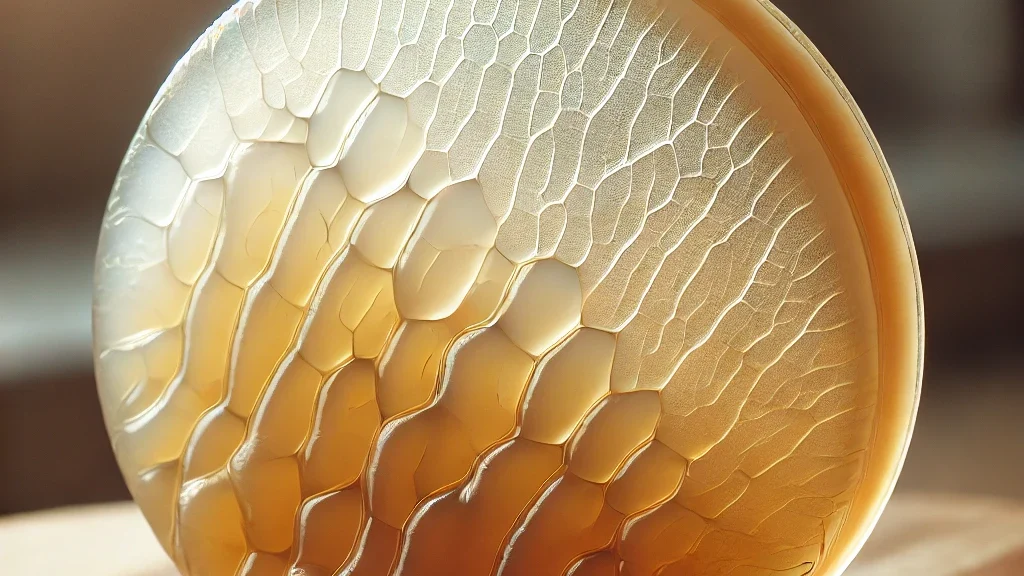Published on [Date] | By [shweta tripathi]
SCOBY bacteria play a crucial role in kombucha fermentation, helping transform sweet tea into a probiotic-rich drink. If you’re wondering what SCOBY bacteria are, how to grow them, and how to use them, this guide will cover everything you need to know.
What Is SCOBY Bacteria?

Understanding SCOBY and Its Role in Kombucha
SCOBY stands for Symbiotic Culture of Bacteria and Yeast. It’s a gelatinous, pancake-like biofilm that forms during the fermentation process of kombucha, a popular probiotic drink.
What Bacteria Are Found in SCOBY?
SCOBY contains beneficial bacteria, including:
- Acetobacter – Produces acetic acid, giving kombucha its tangy taste.
- Gluconacetobacter – Helps build the cellulose structure of SCOBY.
- Lactobacillus – A probiotic that supports gut health.
These bacteria work together with yeast to ferment the tea, producing probiotics, organic acids, and vitamins.
How to Grow SCOBY Bacteria at Home

If you want to grow your own SCOBY, follow this step-by-step method:
Ingredients Needed
- 2 cups strong black or green tea
- ¼ cup white sugar
- 2 cups unpasteurized, raw kombucha
- 1 glass jar (quart-sized)
- 1 breathable cloth & rubber band
Step-by-Step Process
- Brew the Tea: Prepare strong tea and dissolve sugar completely. Let it cool.
- Mix Kombucha: Pour the tea into a clean glass jar and add raw kombucha.
- Cover & Ferment: Use a cloth with a rubber band to cover the jar.
- Wait & Observe: Store in a warm, dark place (21-27°C) for 1-4 weeks.
- Check Growth: A thin, jelly-like layer will form on the surface—your new SCOBY!
Common Issues & Troubleshooting
- Mould Growth: If you see fuzzy white, black, or green spots, discard them.
- Weak SCOBY Growth: Ensure warm temperatures and use unflavored, raw kombucha.
- SCOBY Sinks or Floats: Normal! SCOBY can float, sink, or stay in the middle.
How to Use SCOBY Bacteria
Once your SCOBY is mature, you can use it in multiple ways:
1. Brew Kombucha
SCOBY is essential for fermenting homemade kombucha. Place it in sweet tea, ferment, and enjoy a probiotic-rich drink.
2. SCOBY Snacks
- Blend into smoothies for extra probiotics.
- Make SCOBY jerky by dehydrating strips.
- Chop it up as a fibre-rich pet treat.
3. SCOBY Skincare & Beauty Uses
- DIY face masks for probiotic skincare.
- Hair rinse to balance scalp pH.
4. SCOBY for Composting & Gardening
- Chop and add to compost for nutrient-rich soil.
- Use as a natural fertilizer for plants.
Health Benefits of SCOBY Bacteria
Since SCOBY ferments kombucha, it provides many health benefits, including:
1. Supports Gut Health
SCOBY produces probiotics that improve digestion and balance gut flora.
2. Boosts Immunity
The organic acids and antioxidants in kombucha help strengthen the immune system.
3. Detoxifies the Body
SCOBY bacteria break down toxins, promoting natural detoxification.
4. Aids Metabolism & Weight Loss
Some studies suggest that kombucha may support weight management by improving digestion and metabolism.
5. Reduces Inflammation
SCOBY bacteria produce anti-inflammatory compounds, which may help reduce oxidative stress.
How to Store & Maintain SCOBY Bacteria
If you’re not brewing kombucha right away, store your SCOBY properly:
Storing in a ‘SCOBY Hotel’
- Keep SCOBY in a jar with sweet tea & raw kombucha.
- Store at room temperature (not refrigerated).
- Use a breathable cloth to cover the jar.
When to Replace Your SCOBY
- If it turns black or develops mould, discard it.
- Older SCOBYs become too thick—you can peel off layers or start fresh.
Conclusion
SCOBY bacteria are the foundation of kombucha fermentation, offering probiotic benefits and multiple uses beyond brewing. Whether growing a SCOBY at home, using it for gut health, or experimenting with DIY skincare, it’s a versatile ingredient with plenty of benefits.
Have you tried growing your SCOBY? Share your experience in the comments below!


1 thought on ““What Is SCOBY Bacteria? How to grow and use this superfood “”